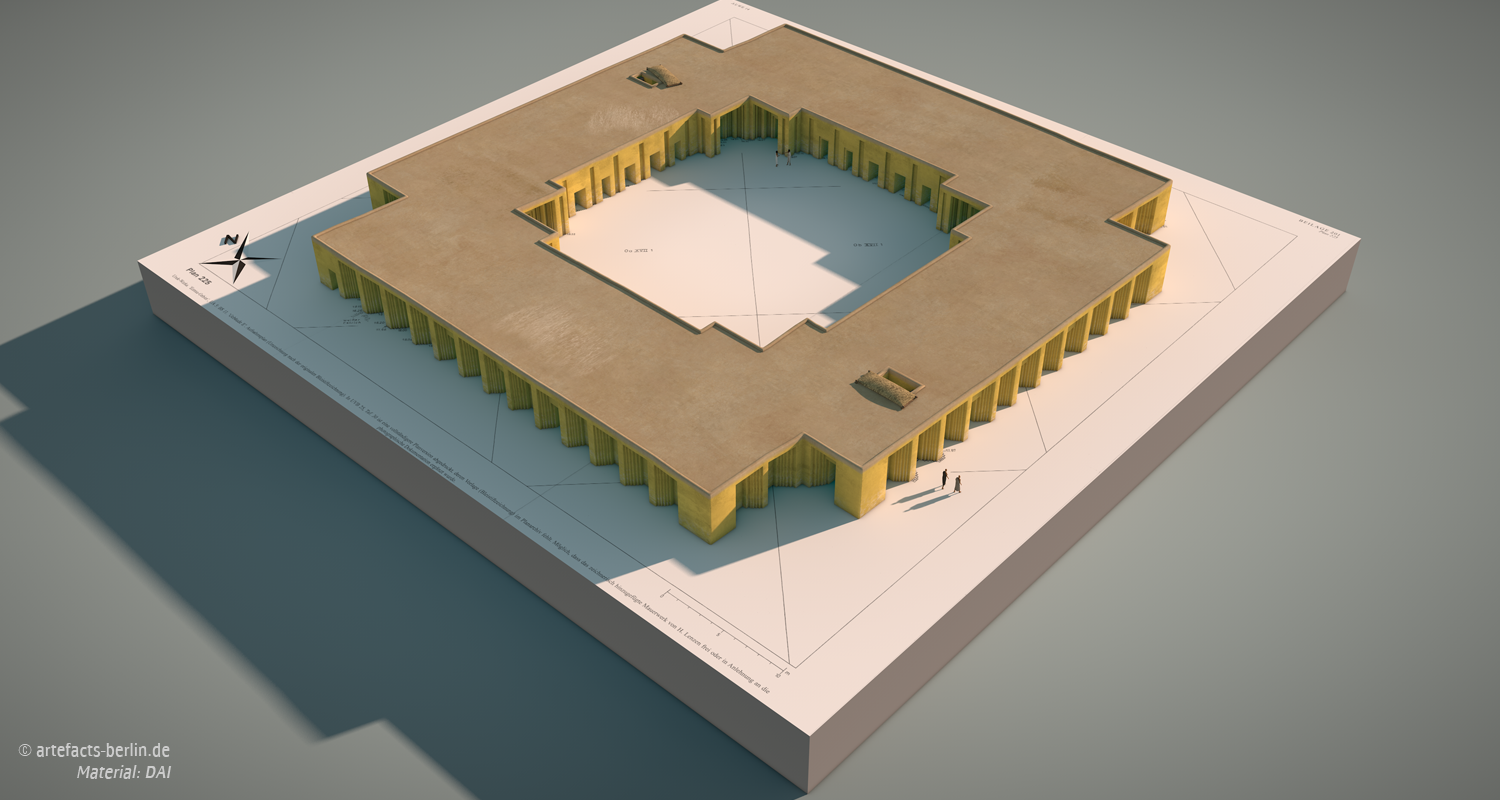About the project
Uruk/Warka, situated in modern-day Iraq, is one of the first cities in the world, and was populated almost without interruption for over 5,000 years – from the 4th millennium BCE to the 1st millennium CE. Uruk is famous for the invention of cuneiform writing at the end of the 4th millennium, the so-called “late Uruk period”. One of the architectural layers of ‘Untersuchungsareal’ 5 in the centre of Uruk carries the number 11, which consists mainly of two buildings.
We scientifically reconstructed and visualised Building E as part of the TOPOI-Project ‘XXL – Monumentalized Knowledge. Extra-large Projects in Ancient Civilizations’, in close cooperation with the German Archaeological Institute (DAI) in Berlin. The near rectangular building measures around 57 x 57 m. It was not preserved completely, but the ground plan could be reconstructed due to symmetrical reasons. Where the building was preserved, it was so up to a height of two courses of mud-brick. It basically was constructed as a combination of four architectural wings, which enclosed a rectangular courtyard. The court walls and outer walls were structured by an extraordinary pillar-niche-system.
In one corner of Building E was a basin constructed into the ground. The function is unclear. Inside, many jug caps were found and the floor, consisting of limestone was added at a later point, so that the basin originally was deeper. It is unlikely, that the basin was a water basin, as the mud-brick walls and the limestone floor were not isolated with asphalt.
The building was painted with a bright ocherish yellow colour on the outer and inner walls. This sets Building E apart from most other buildings in Uruk. It is not certain, if the central middle-halls where constructed with a heightened roof or not. The fireplaces inside the central halls however point to a heightened roof, as the rooms would need proper air circulation.
Literature
- Eichmann, R. 2007: Uruk. Architektur I. Von den Anfängen bis zur frühdynastischen Zeit (=AUWE 14), Textteil und Beilagen, Rahden.




